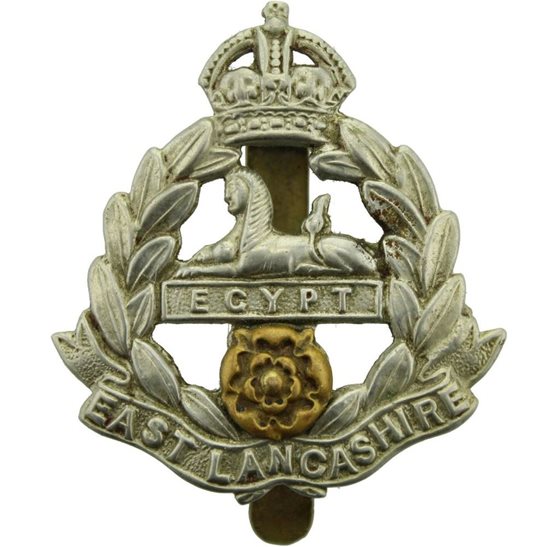Personal Details
Born: 1899 in West Derby, Lancashire (possible).
Family: On the 1901 Census he was Edwin George Williams, said to be the nephew of David Wilson, a grocer`s porter and his wife Hannah, but by the time of the 1911 Census he was their son, Edwin George Wilson. He married Gertrude V.D. Ridgeway in 1922 in Whitchurch, Shropshire. The couple had three children, Joyce, Phillippa and Maureen. Sometime between 1939 and 1947 the couple appear to have divorced, both remarrying in 1947. Edwin married Elizabeth Williams. No children can be traced for this marriage.
Residence: From at least 1901 until 1919 Edwin lived at 10 Bark Hill, Whitchurch. In 1939 his address was 10 Mile Bank Road, Whitchurch. At the time of his death in 1975, his home was 51 Sharps Drive, Whitchurch.
Employment: In 1939 he was a private chauffeur and mechanic.
Died: In 1975 at The Cottage Hospital, Whitchurch and was buried in Whitchurch cemetery on 27 March that year.
Military Details
Regiment: East Lancashire Regiment.
Rank: Private
Service Number: 30692
Date of Enlistment: Not known
Date of Discharge: Not known
Reason for Discharge: Not known
Edwin was awarded the Campaign Medals (British War Medal and Victory Medal).

The British War Medal (also known as 'Squeak') was a silver or bronze medal awarded to officers and men of the British and Imperial Forces who either entered a theatre of war or entered service overseas between 5th August 1914 and 11th November 1918 inclusive. This was later extended to services in Russia, Siberia and some other areas in 1919 and 1920. Approximately 6.5 million British War Medals were issued. Approximately 6.4 million of these were the silver versions of this medal. Around 110,000 of a bronze version were issued mainly to Chinese, Maltese and Indian Labour Corps. The front (obv or obverse) of the medal depicts the head of George V. The recipient's service number, rank, name and unit was impressed on the rim.
The Allied Victory Medal (also known as 'Wilfred') was issued by each of the allies. It was decided that each of the allies should each issue their own bronze victory medal with a similar design, similar equivalent wording and identical ribbon. The British medal was designed by W. McMillan. The front depicts a winged classical figure representing victory. Approximately 5.7 million victory medals were issued. Interestingly, eligibility for this medal was more restrictive and not everyone who received the British War Medal ('Squeak') also received the Victory Medal ('Wilfred'). However, in general, all recipients of 'Wilfred' also received 'Squeak' and all recipients of The 1914 Star or The 1914/1915 Star (also known as 'Pip') also received both 'Squeak' and 'Wilfred'. The recipient's service number, rank, name and unit was impressed on the rim.

